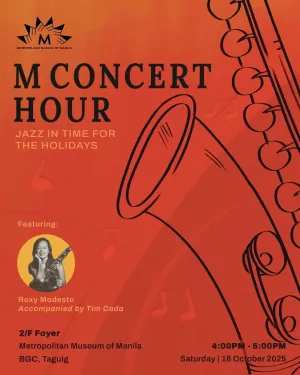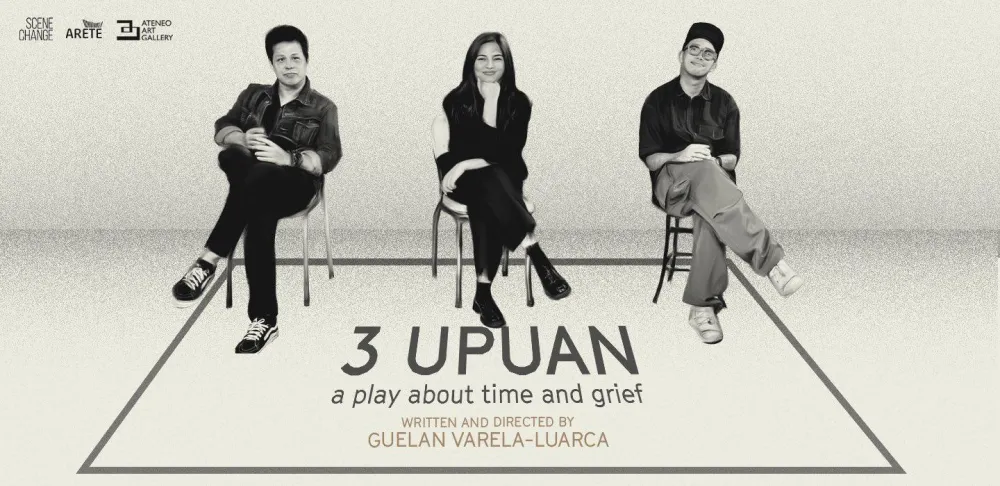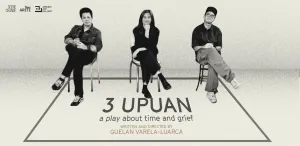Standing Ovation: Ballet Manila’s ‘Florante at Laura:' An Epic Romance

Step into the world of live theatre with "Standing Ovation," your trusted companion for navigating Asia's vibrant performing arts scene. From the neon-lit streets of Hong Kong to the historic stages of Manila, we're scouring the region to bring you honest, engaging reviews of the most talked-about shows. Whether you're drawn to the flawless elegance of ballet, embarking on a musical journey through moving tunes, or the raw emotion of dramatic plays, let us guide you to the performances that will resonate with you. So grab your playbill and join The Beat Asia as we immerse ourselves in the region's dazzling arts & culture scene. The curtain's rising – let the review begin!
“Florante at Laura” is a Philippine literature classic written by Francisco “Balagtas” Baltasar. Published in 1983, the romantic verse follows the story of Florante, a duke held captive and enslaved by the Turks, and his journey to overthrow his home country’s usurper and reunite with his lover, Laura.
After the success of “Ibong Adarna,” Ballet Manila proudly presents this brand-new epic production of a beloved Filipino classic. The world premiere was staged at the Aliw Theatre on Oct. 12 at 8 PM and was followed by two more performances on Oct. 13 and 19 at 5 PM. From its romantic dance duets to the soaring musical score, this epic ballet performance is a treasure trove of talent and creativity that deserves to be recognized. And here’s why.
The Story of ‘Florante at Laura’
Many of us know the classic tale which was mandatory in almost every Filipino curriculum at school. Ballet Manila translated this epic tale for the stage in two acts, cleanly narrating both past and present timelines through dance and movement.
The story unfolds through flashbacks and personal accounts of each of the four main characters: Florante, a duke from Albania; his lover and Albanian princess, Laura; Florante’s savior and Muslim prince, Aladin; and Aladin’s love, Flerida.
In the first act, the duke is in the middle of the jungle, helpless and bound. We are then taken back to the past to learn about his noble and heroic acts, and how he ended up in this state. We are also introduced to his lover, Laura, the daughter of the King; and Count Adolfo, Florante’s childhood friend and eventual traitor to the crown. Adolfo also holds affection for Laura, whom he attempted to marry after taking over the throne. Just as Florante was about to meet his demise in the forest with the arrival of wild lions, he was saved by a Muslim prince named Aladin.
In act two, Aladin tells Florante about Flerida, whom his father, Sultan Ali-Adab, also desired. When Aladin returned to Persia, the sultan imprisoned him with claims that he had abandoned his troops and was ordered to be beheaded. Aladin was released by a general, however, and was banished from their country instead.
Meanwhile, Flerida disguised herself as a soldier to escape her marriage from the sultan and fled the kingdom. In the woods, she saved a woman about to be sexually assaulted, who is revealed to be Laura. She had been taken by Adolfo who fled Albania when Menandro, Florante’s childhood friend, overthrew him from power. The lovers were reunited in the woods and returned to their respective kingdoms as rulers.
The awit (a Filipino song or poem) is a blend of romance and epic adventures that embodies the theme of “love conquers all” as the story revolves around lovers who were separated by unfair situations. However, it’s more than just a love story because it also talks about injustice, revolution, and a dash of female empowerment.
Dance Poetry at Its Finest
One of our worries about the ballet version is the storytelling aspect as “Florante at Laura” doesn’t follow a linear plotline, and often goes back and forth between the past and the present time. This issue was easily addressed through text that flashed on the screen, informing the audience of the scene being staged. It may seem like a simple way to go about the parallel storylines, but it was accompanied by an outstanding musical score and excellent lighting design which easily carried audiences through the different scenes and settings, allowing us to determine the accounts of each character.
Ballet Manila has been known to have great form and artistry as seen from their previous productions and “Florante at Laura” is no exception. One of the notable features of the show is that it doesn’t showcase the classical ballet style and leans towards a more contemporary dance style, focusing more on floor work over leg work and pointe. It was fitting considering the production required a more interpretative approach to storytelling as it presented multiple battle scenes.

The ballet duets (pas de deux), however, were enchanting. Joshua Rey Enciso’s Florante was strong and noble, commanding the stage every time the light shone on him, while Abigail Oliveiro’s Laura was graceful and lovely. Together, they formed a chemistry that immersed audiences into their love story, making their romance believable and worth rooting for.
The dance between Aladin (Noah Esplana), Flerida (Stephanie Santiago), and Sultan Ali-Adab (Mark Sumaylo) was also quite memorable. Noah, Stephanie, and Mark showed us what a love triangle is supposed to feel like: passionate and full of romantic tension. The stage blazed red, which was more than just the color of the Persians in the production, but also represented the intense three-way love affair. It was like watching two dances in one. There was love and longing in Aladin and Flerida’s movements while Flerida dancing with Sultan Ali-Adab was fierce, jealous, and reluctant. Safe to say, it was one of our favorite choreographies in the show.

Another notable choreography is the climactic scene when Flerida rescues Laura from Adolfo. Flerida shot an arrow which was caught by a dancer who was then carried across the stage toward Adolfo, ultimately killing him. It was creative and provided just the right amount of dramatic tension that had the crowd applauding.
Setting-wise, the production didn’t have elaborate set pieces or props with only fixed geometric platforms and mobile dividers or screens rolled onto the stage. This provided fluidity and movement that beautifully blended with the company of dancers that graced the stage. Meanwhile, the back of the stage projected old-world visuals of castles and fortresses, which in our opinion went in the opposite direction of the contemporary set design and could have gone without. However, set designer Mio Infante explained that his designs depict not just the actual setting in the story.
“This epic ballet includes a diverse set of locations, which not only serve as physical spaces but also symbolize the internal and external conflicts of the characters, as well as broader themes of love, war, loyalty, and betrayal,” Mio explained.

They also made use of colors very well, making it clear where the dancer's loyalties were: blue for Albania and red for Persia. They also added green, which represented the soldiers who betrayed the kingdom and joined Adolfo’s cause. The colors were reflected in the costumes, as well which were from Make It Happen by Otto Hernandez & Therese Arroyo Hernandez. It was simple and yet evoked the characters’ background and personalities, such as how Laura’s princess stature was shown through the glittering crown of crystals in her hair, while Adolfo was donned in green all throughout, hinting his villainous intentions and disposition.
Aesthetic-wise, the production did a wonderful job blending the elements and supporting the overall mood and atmosphere of each scene in the story. Lighting director John Batalla emphasized the importance of using a distinct lighting color palette to differentiate the varied locales of the production, and we truly believe “Florante at Laura” succeeded in transporting audiences into its world and through its many place and time settings.
A Dance to Bridge Generations
More than a ballet, this production was an epic collaboration of national artists. Artistic Director and CEO of Ballet Manila Inc., Lisa Macuja-Elizalde, expressed her excitement for the production coming to life. In the press release, she said, “‘Florante at Laura’ was a project that was going to be Gerardo Francisco’s next epic adventure. This was planned way before the pandemic happened.”

Gerardo Francisco Jr., a long-time principal dancer and artistic associate of the company also choreographed “Ibong Adarna.” For this production, he collaborated with British choreographer Martin Lawrence to bring the epic tale to the stage.
“Clear communication, thorough discussions, and mutual support were crucial in keeping us on track,” Gerardo shared to which Martin agreed, saying that they were able to “click and bounce ideas off of each other” easily.
Lisa had asked renowned writer and balagtasan (a Filipino form of debate done in verse) expert Dr. Michael Coroza to create the libretto. As for the score, Lisa imagined someone who could make sweeping, powerful, and dramatic musical compositions; someone akin to a Filipino Tchaikovsky. Who else can fit the bill other than Ryan Cayabyab, the renowned National Artist for Music?
Despite being a seasoned composer and musician, Ryan was thrilled to work and collaborate with his fellow creatives on this production. The result was nothing short of outstanding, bringing the Filipino awit to life in ways we never thought possible. The overture at the start of the show sent goosebumps along our skin as we were pulled into the world of the story, setting the mood and establishing the overall atmosphere. It was bold and yet tender; powerful but also vulnerable. There was a song to match each scene and character arc, making sure the audience was drawn in completely.

Breathing life into Ryan’s original compositions is the Orchestra of the Filipino Youth (OFY) under the baton of his son, Toma Cayabyab.
As one of the country’s leading dance companies, Ballet Manila has proved time and time again their talent, passion, and artistry. Just like in the story, their production of “Florante at Laura” bridges the past and the present—inviting ballet enthusiasts and newcomers to appreciate the art form. Its powerful story comprised of universal themes of love and betrayal, coupled with excellent choreography that blends powerful and controlled movements with bright and nimble footwork was a true marvel to watch, making it a fantastic addition to their catalog of productions.
We hope more people can fill up those seats for their future performances, especially since Lisa announced their extended run in November at Ateneo’s Areté theatre.

For more information on upcoming performances, check out Ballet Manila’s website or follow them on Facebook, X (Formerly Twitter), and Instagram.
Get the latest curated content with The Beat Asia's newsletters. Sign up now for a weekly dose of the best stories, events, and deals delivered straight to your inbox. Don't miss out! Click here to subscribe.








































































































